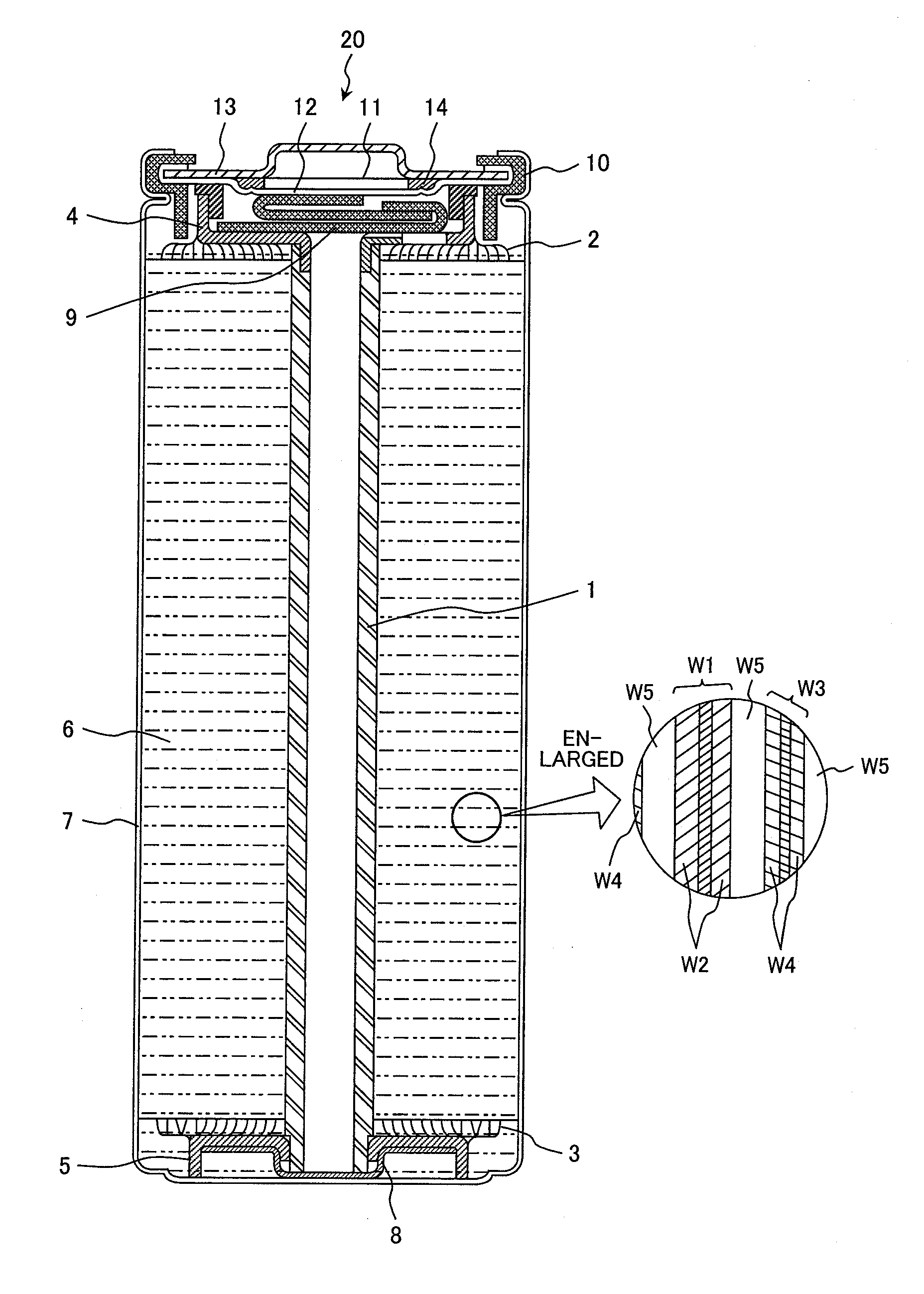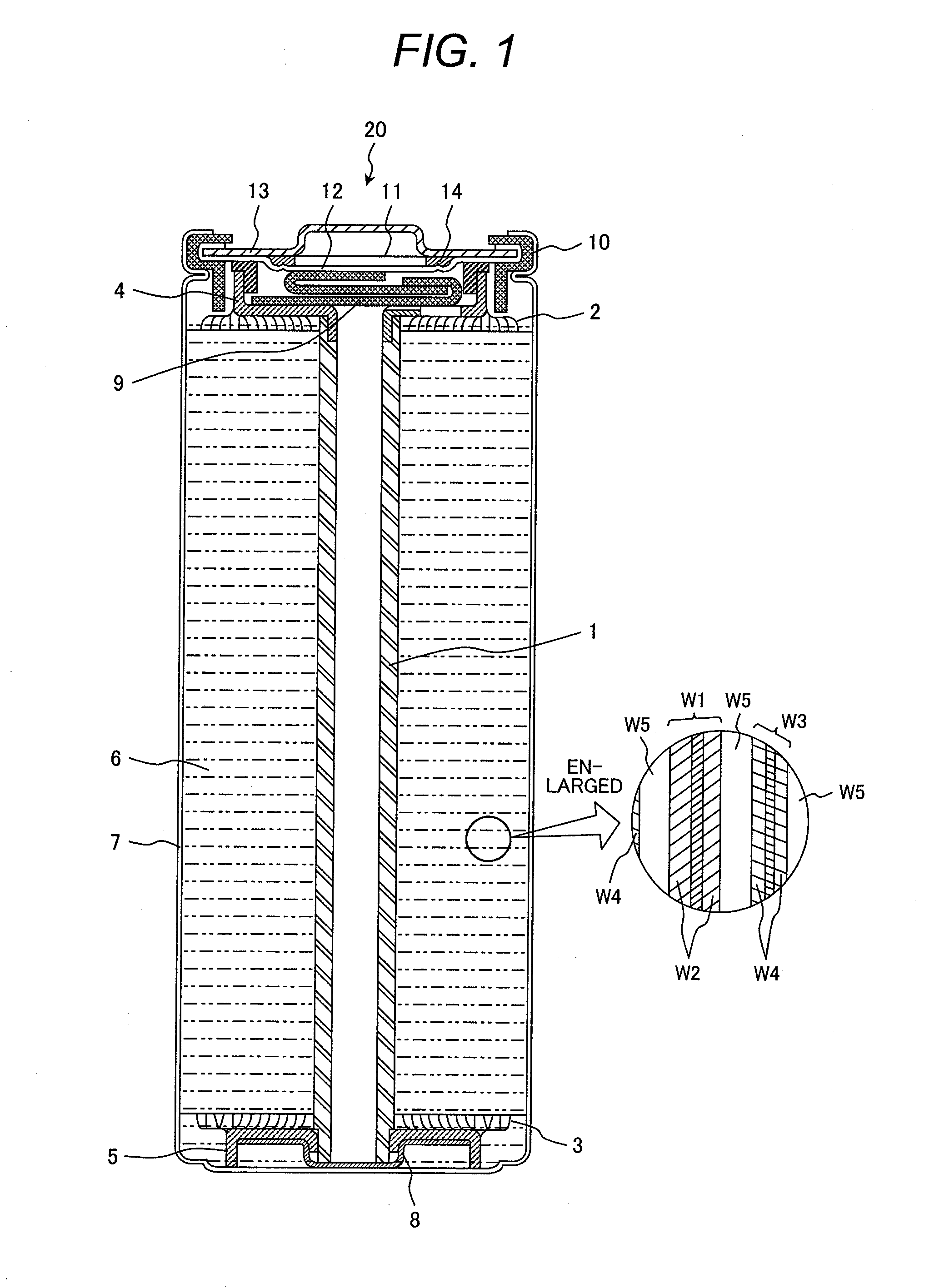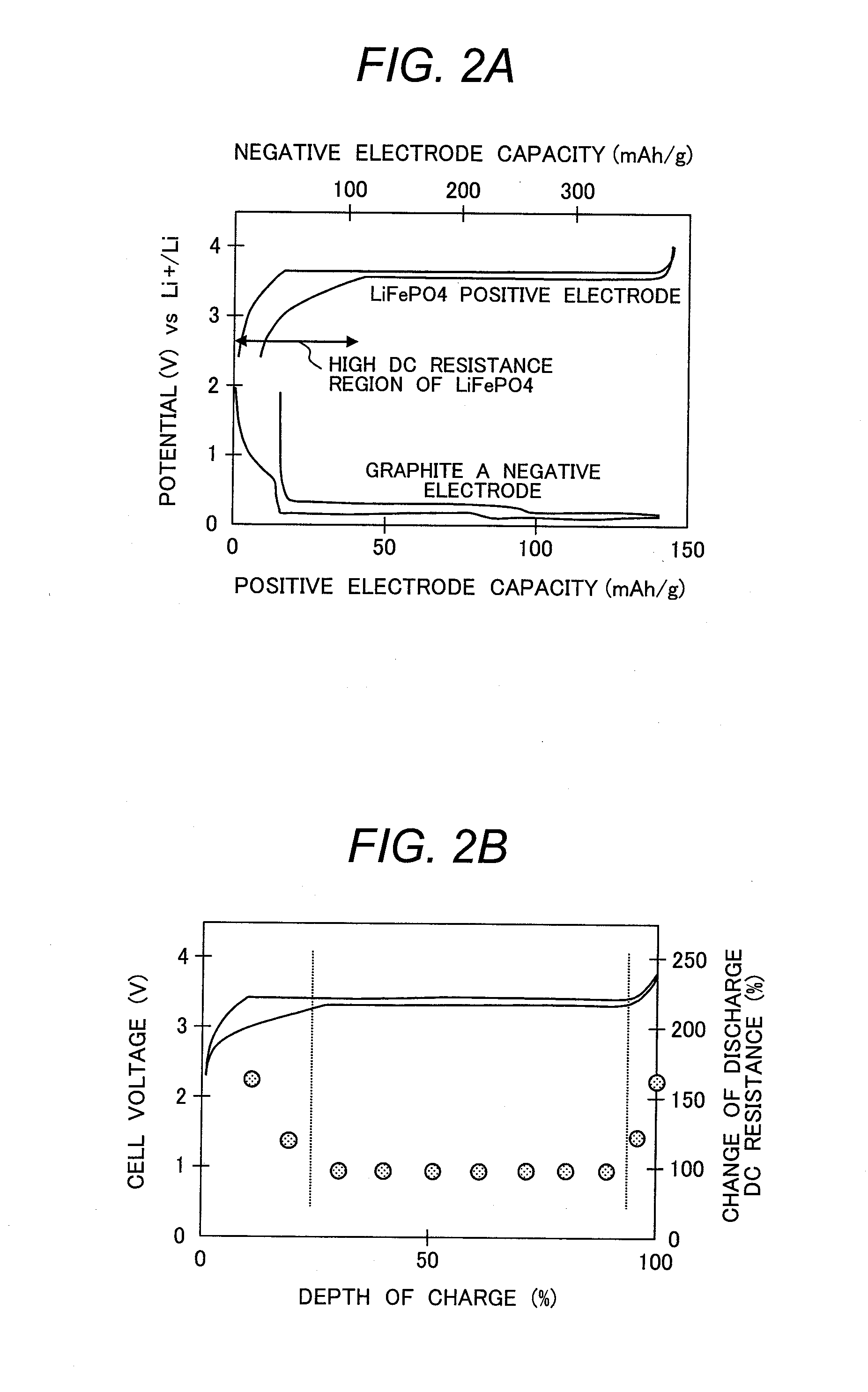Nonaqueous electrolyte secondary battery
- Summary
- Abstract
- Description
- Claims
- Application Information
AI Technical Summary
Benefits of technology
Problems solved by technology
Method used
Image
Examples
example 1
Mixture of Graphite A and Amorphous Carbon A
[0084]In Example 1, a carbon-hybridized lithium iron phosphate
[0085](LiFePO4) as a positive-electrode active material was prepared in the following manner. Specifically, iron oxalate (FeC2O4.2H2O; supplied by Kanto Chemical Co., Inc.), lithium carbonate (Li2CO3; supplied by Kanto Chemical Co., Inc.), ammonium dihydrogen phosphate (NH4H2PO4; supplied by Kanto Chemical Co., Inc.), and dextrin (supplied by Kanto Chemical Co., Inc.) as a carbon source were pulverized and mixed in a satellite ball mill for 2 hours, the mixture was fired in an argon gas atmosphere at 600° C. for 24 hours, and thereby synthetically yielded a lithium iron phosphate containing 5 percent by weight of carbon. The resulting carbon-hybridized lithium iron phosphate was subjected to X-ray powder diffractometry to verify the absence of heterogenous phases.
[0086]The X-ray powder diffractometry was performed with the RINT 2000 supplied by Rigaku Corporation using the Cu Kα...
example 2
Mixture of Graphite A and Amorphous Carbon B
[0090]Example 2 adopted a positive electrode plate W1 prepared by the procedure of Example 1. A negative-electrode active material used herein was a mixture of Graphite A and Amorphous Carbon B. Graphite A was as with one used in Example 1. Amorphous Carbon B showed an intensity ratio I1360 (D) / I1580 (G) of 1.0 as determined through Raman spectrometry and a specific surface area of 3 m2 / g and had an initial charge capacity of 350 mAh / g and a discharge capacity of 280 mAh / g (charge / discharge efficiency of 80%). Graphite A and Amorphous Carbon B was mixed by weight ratio of 60:40. The specifications of the negative electrode had an initial charge capacity of 344 mAh / g, a negative-electrode initial charge / discharge efficiency e2 of 87%, and a difference x of 12%, as shown in Table 2. How the resistance varies depending on the depth of charge was determined to find that this sample had an available range of charge depth with a resistance chang...
example 3
Mixture of Graphite B and Amorphous Carbon B
[0091]Example 3 adopted a positive electrode plate W1 prepared by the procedure of Example 1. A negative-electrode active material used herein was a mixture of Graphite B and Amorphous Carbon B. Graphite B showed an interlayer distance d002 of 3.370 angstroms as determined through X-ray powder diffractometry and a specific surface area of 0.8 m2 / g and had a charge capacity of 340 mAh / g and a discharge capacity of 320 mAh / g (initial charge / discharge efficiency: 94%). Amorphous Carbon B was as with one used in Example 2. Graphite B and Amorphous Carbon B was mixed by weight ratio of 65:35. With reference to Table 2, the specifications of the negative electrode had an initial charge capacity of 344 mAh / g, a negative-electrode initial charge / discharge efficiency e2 of 89%, and a difference x of 10%. How the resistance varies depending on the depth of charge was determined to find that this sample had an available range of charge depth with a r...
PUM
 Login to View More
Login to View More Abstract
Description
Claims
Application Information
 Login to View More
Login to View More - R&D
- Intellectual Property
- Life Sciences
- Materials
- Tech Scout
- Unparalleled Data Quality
- Higher Quality Content
- 60% Fewer Hallucinations
Browse by: Latest US Patents, China's latest patents, Technical Efficacy Thesaurus, Application Domain, Technology Topic, Popular Technical Reports.
© 2025 PatSnap. All rights reserved.Legal|Privacy policy|Modern Slavery Act Transparency Statement|Sitemap|About US| Contact US: help@patsnap.com



